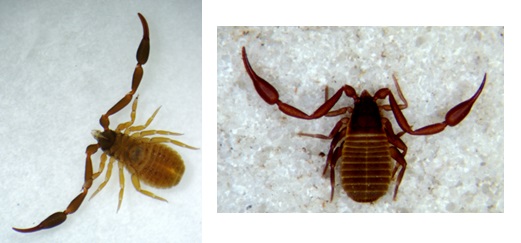


Common Name – Forest Pseudoscorpion
Phylum: Arthropoda
Class: Arachnida
Order: Pseudoscorpiones
Family: Cheliferidae
Dactylochelifer silvestris is a species of pseudoscorpion, a small arachnid known for its pincer-like pedipalps. This organism is technically not an insect, but more closely related to scorpions and spiders.
In North Dakota, this species is found primarily in grassland habitats, particularly in areas with leaf litter, under stones, or beneath bark where moisture and cover are available.
Despite the region’s harsh climate, D. silvestris has adapted well to the Great Plains, including North Dakota, where it is now considered relatively common.
The lifecycle of D. silvestris includes egg, protonymph, deutonymph, tritonymph, and adult stages. Females typically carry eggs in a brood sac until they hatch, and the young remain with the mother for a short period before dispersing. This lifecycle allows them to thrive in microhabitats that offer protection from environmental extremes.
Feeding primarily on small arthropods such as mites and springtails, D. silvestris uses its pincers to capture prey and inject digestive enzymes. This predatory behavior helps control populations of soil-dwelling invertebrates, contributing to the ecological balance in North Dakota’s prairie ecosystems. This organism is often found in homes in dusty/damp places where it feeds on mites.